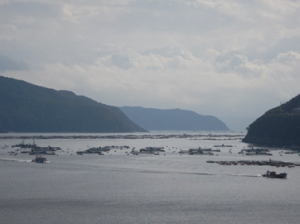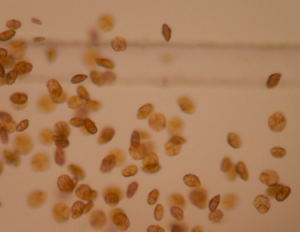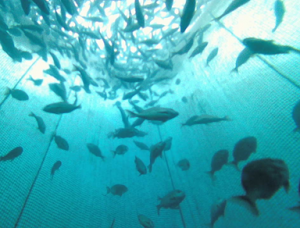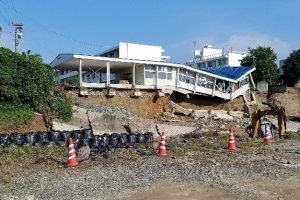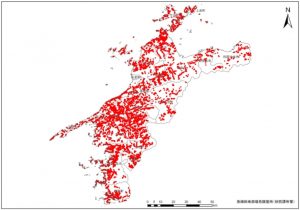Classes
Industrial Management
Introduction to Marketing
- Academic staff: Takayuki Tanimoto
Marketing is the creation of a system for selling goods or services. For example, imagine you are in charge of marketing a new chocolate product at a candy company. Your first task is to come up with a strategy identifying your target market (elementary school students, young women, etc.), defining your product concept and features (a treat to eat with friends, a healthy snack, etc.), and deciding on a price (affordable, luxury, etc.), sales locations (only at convenience stores, broadly available at supermarkets, etc.), and advertising plan (TV commercials, social media, etc.). Creating and implementing this type of comprehensive plan is what we mean by marketing.
I believe anyone can enjoy studying marketing as long as they are interested in it. If you wonder why the goods and services you see all around you, from cell phones and ice cream to hamburgers and cafés, have maintained their popularity for so long and want to delve into the reasons, then you have what it takes to work in marketing. We’ll use familiar goods and services as examples to learn how products are sold.
First-Year Project Seminar
- Academic staff: Hidenobu Sai and Tadayuki Okamoto
This is a problem-solving class for first-year students in the Industrial Management Department of the Faculty of Collaborative Regional Innovation. Students in the class, many of whom are interested in management, economics, and community revitalization, will learn about problems faced by local businesspeople who are invited as guest speakers. The students will then break into groups of about six people and discuss potential solutions to these problems.
Past problems have included communicating the appeal of bread made with hulless barley to university students, revitalizing downtown Yawatahama, and recruiting more young workers to the construction industry.
The aims of the class are first, for students to understand the actual problems that businesspeople must deal with; second, to deepen their interest in social and economic mechanisms; third, to become accustomed to solving problems in groups; and fourth, to identify their own strengths during their first year and realize the importance of deepening their knowledge throughout the remainder of their time at university.
Industrial Innovation
Control Engineering
- Academic staff: Tomonori Yamamoto
Japan today faces many challenging social problems, from an aging population and a shrinking workforce to environmental and energy issues. Meanwhile, maintaining industrial competitiveness and societal vitality in the midst of rapid globalization are key goals. Creating a safe living environment for all citizens and improving quality of life are important parts of achieving these goals. Robots and other intelligent machines are expected to help solve these problems and realize a prosperous society. This is because rapid advances in computer technology are making it realistic for robots, which until now have been used primarily in factories, to play new roles in nursing, social welfare, and the service industry.
To operate these robots as we wish, it is first necessary to make machines run precisely. This, in turn, requires an understanding of servomechanisms and feedback control, which are the foundation of automated control. In this class, students will study feedback control, one of the basic concepts necessary for automated control of machines.

Chemistry of Paper Manufacturing I
- Academic staff: Shuji Fukahori
Class Objectives
In Chemistry of Paper Manufacturing I, students learn about the chemical structure of the wood pulp and chemicals used to make paper as well as techniques for adding functionality to paper.
Class Description
Paper is made from pulp, a fibrous material extracted primarily from wood, that is pressed into sheets. Pulp is composed of cellulose, which consists mainly of chains of glucose monomers. Because cellulose contains many hydroxyl groups (-OH), it is hydrophilic. Today, paper has many uses. Paper products that are used while damp, including tissues and paper towels, require both absorbency and wet strength. Paper is formed when hydrogen bonds link together the pulp fibers, but because hydrogen bonds break in the presence of water, paper loses strength when wet. To overcome this problem, substances can be added that enhance wet strength by form bridges other than hydrogen bonds between pulp fibers. Although paper may seem to be a simple material, a variety of factors, including strength, appearance, texture, printing qualities, cost, and runnability, must be considered when manufacturing it. By understanding the composition of pulp and manufacturing chemicals as well as the principals by which various characteristics emerge, students will acquire the skills necessary to propose methods for controlling the various properties of paper.
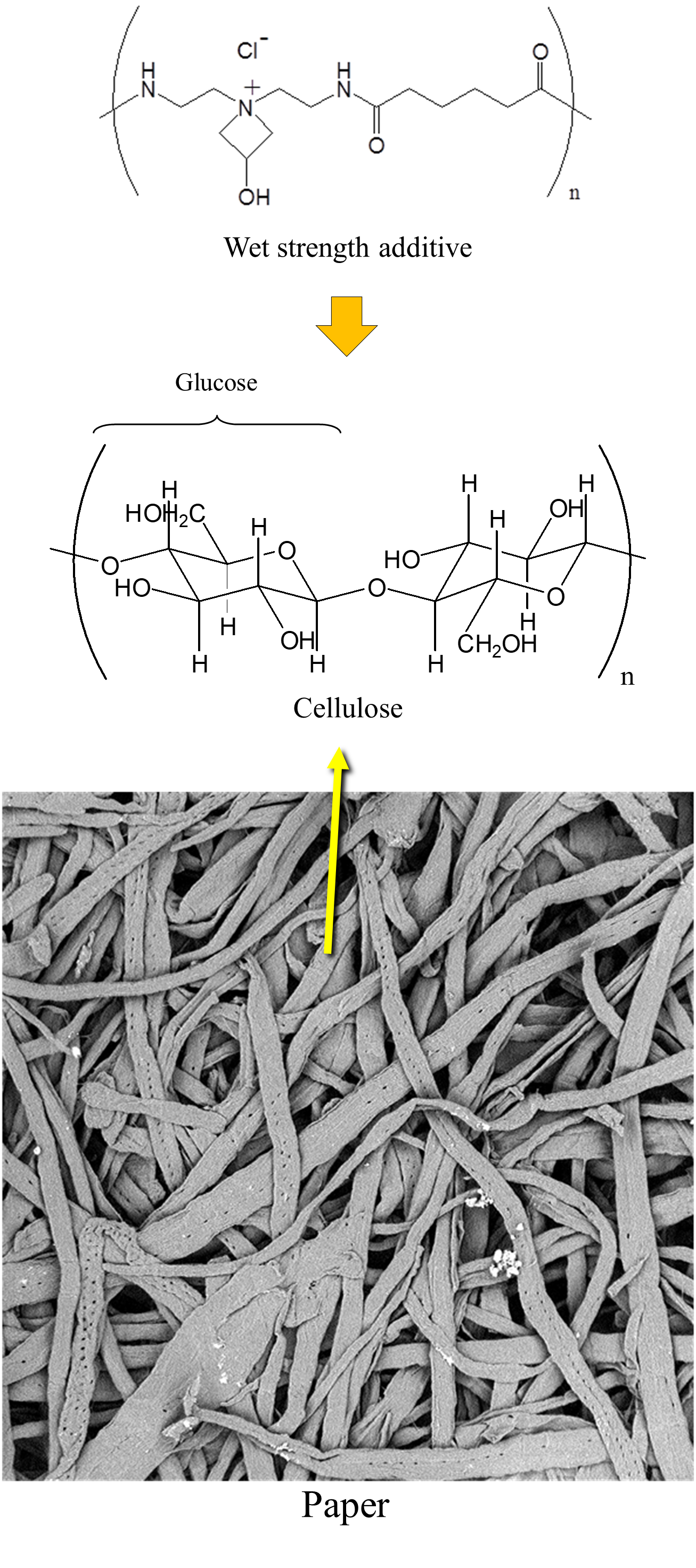
The study on environmental conservation for sustainable aquaculture
- Academic staff: Sonoko Shimizu and Rie Goto
Class Description Fisheries and aquaculture rely on the productivity of natural resources in the marine environment. This class provides an overview of the ocean environment and marine primary production to understand its relationship with fisheries and aquaculture. Issues such as harmful algal blooms and fish diseases caused by aquaculture fields are showcased using practical examples to introduce theories and methods for sustainable aquaculture production. A Message from the Professors The aquaculture industry continues to grow worldwide. In 1995, the FAO established its Code of Conduct for Responsible Fisheries, and in 2015 the United Nations established Goal 14 of its Sustainable Development Goals, “Conserve and sustainably use the oceans, seas and marine resources for sustainable development.” To achieve sustainable aquaculture, it is important that countries, regions, and people engaged in fisheries take responsibility for appropriately managing and preserving the marine environment. We hope that this class will provide an opportunity for us to think together about what kind of marine environment we want to preserve for the future.
- Aquaculture in the Uwakai Sea
- Karenia mikimotoi, a harmful type of red-tide plankton
- Farmed fish swimming vigorously in a pen
Environmental Design
Sustainability Science
- Academic staff: Rupprecht Christoph D. D.
Sustainability science centers around the idea that living in the Anthropocene—an age in which human influence is changing the Earth—requires a new common sense: human well-being depends entirely on our environment and other living beings. Sustainability, widely defined as “meeting the needs of the present without compromising the ability of future generations to meet their own needs” has yet to be achieved by any nation. Deepening ecological crises have made sustainability, and with it the Sustainable Development Goals, vital issues for all aspects of society—issues now the focal points of fierce debate worldwide. This mandatory course for all first-year students in the Faculty of Collaborative Regional Innovation provides a broad perspective to help situate questions that will deeply affect students’ futures. Beginning with a historical retrospective, questions regarding the links between social and ecological reproduction are followed by an introduction to colonialism, capitalism, and world ecology with the aim of highlighting the roots of today’s crises as well as the rise of sustainability concerns over the course of the 20th century. An overview of the current state of the world focuses on sustainable consumption and production, agri-food systems, and urban–rural tensions. Questions of justice, weak and strong sustainability, growth and degrowth lead into a discussion of social transformation and transdisciplinary approaches. Introductions to Indigenous views and practices, multispecies sustainability, and approaches involving media such as art, games, and fiction provide students a glimpse at a rapidly developing field of study. The course concludes with a student-led future-scenario workshop and an overview of ways that students can become agents of change.

Fridays For Future climate strikes in Cologne, Germany, 2019.
Source: https://www.flickr.com/photos/160866001@N07/48764199878
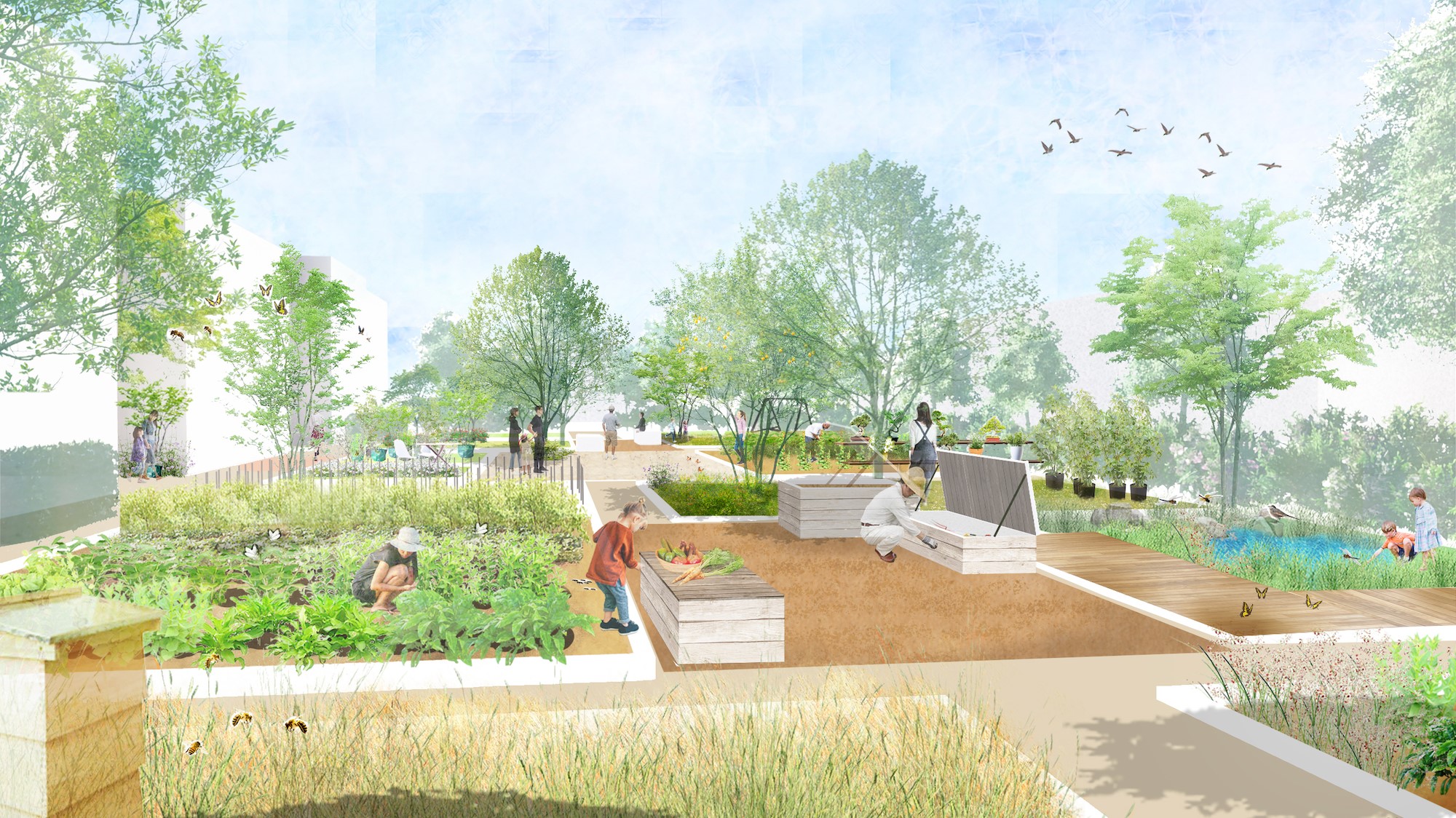
Multispecies community garden design concept (Rupprecht, Yoshida, and Cui, 2020)
Natural Disaster Science
- Academic staff: Bhandary Netra Prakash
Content and Purpose:
This lecture course covers the basic science of natural hazards, including their occurrence and impacts in disasters, as well as disaster mitigation. The main purpose of learning about natural disasters through this course is to understand the mechanism of disaster occurrence and the process of human intervention in natural phenomena and to learn techniques for mitigating natural disasters and building disaster-safe and resilient communities.
Why Learn Natural Disaster Science:
Disaster management is one of the key elements to be considered in building safe and secure human societies. Japan, for example, as a highly disaster-prone country, cannot do so without taking into account the risk of natural disasters. Japan’s experience with the natural disasters and a long-practiced know-how regarding disaster risk reduction are equally important in other disaster-prone countries in Asia and around the world. Understanding disaster science, disaster occurrence mechanisms, and the natural and human environments will facilitate the creation of disaster-safe communities in the future.
Instructor’s Message:
In the last 20 years, the world has witnessed the death of over 1.2 million people in natural disasters, and more than half of these people died in earthquake and tsunami disasters. Predictions of major earthquakes and tsunamis in Japan as well as in other parts of the world have spurred efforts to prepare at the maximum possible level for disasters beyond the increasingly common meteorological and climatological disasters. Therefore, this lecture course will foster leaders who will build safer human societies and protect the natural environment.
- Example of damage from the 2017 Northern Kyushu floods
- Slopes in Ehime Prefecture in danger of collapse during a Nankai megathrust earthquake
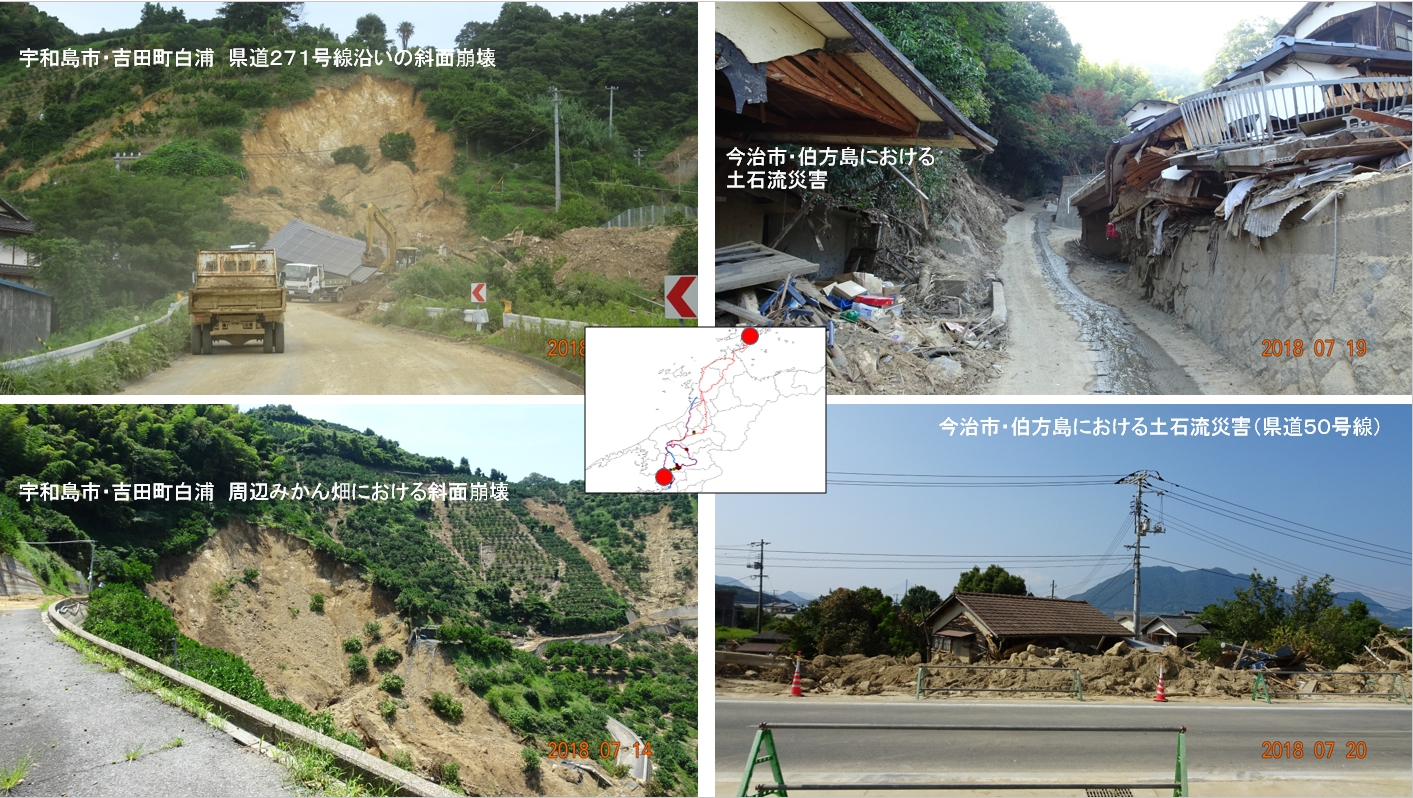
Example of landslide in Ehime Prefecture during the 2018 West Japan floods
Regional Resource Management
Cultural Resource Utilization
- Academic staff: Taiki Sato
Defining “cultural resources” is not an easy task. The term covers a wide range of places, objects, and even living organisms; for example, shrines, stone monuments, and wild plants can all be considered cultural resources. For this reason, there are many ways to utilize cultural resources, and many factors should be taken into consideration, including their location and the perspectives of local residents. Utilizing these resources is not easy, in part because generalizations rarely apply.
In this class, we will first review the necessary concepts for thinking about cultural resources, using as our examples historical buildings in shrines, temples and castles, religious picture tablets, stone monuments, and local history. Then, we will discuss examples of utilization, including exhibiting and describing objects at museums as well as developing related museum souvenirs, and activities to protect the Japanese giant salamander, using these examples to think about common points of debate and consideration when utilizing cultural resources.
It is important to recognize that simply studying such examples is not enough; we must also have a desire to learn as much as possible about the resource under consideration. As a first step, I hope students will leave this class with an awareness of and interest in the cultural resources around them.
Sports and Human Resource Development
- Academic staff: Akira Yamanaka
Sports are said to have contradictory characteristics: specialization and popularization, tradition and evolution. Today, even as new possibilities open up for sports, there are many challenges.
In this class, students will draw on their own personal sports experiences as they study these problems and learn about human resource development for a better society. We will reconsider the possibilities of sports from diverse perspectives.
Class Description
Students will learn about the significance and characteristics of sports, working toward the goal of being able to explain current issues as well as the leadership qualities that communities need today. Lectures by guest speakers will provide a special opportunity to reconsider aspects of sports not usually encountered in everyday life.
Message from the Professor
Many of us have played sports. In this class we will think about these experiences not merely as physical activity but also as something students can draw upon in their careers. Regardless of the level of competition, sports experiences can become tools for personal growth as students grow and develop into individuals capable of contributing to a diverse society.
Study of Agricultural Structure
- Academic staff: Kumiko Takeshima
Class Objective
Agriculture in Japan has been shaped by the selection of crops suitable to the climatic and geographical conditions of each region. Students in this class gain an understanding of the characteristics of Japanese agriculture by focusing on the relationship among land, labor, and capital, starting from the earliest years of the nation’s history.
Class description
We use statistical sources such as the Census of Agriculture and Forestry to observe changes up to the present day. To understand aspects of agriculture not fully captured by statistics, we also use visual sources such as NHK’s “Sixty Postwar Years on Film” series to assess postwar changes in urban and rural life from many perspectives.
Because the class is held at Ehime University, we also study Ehime Prefecture’s prized citrus industry. We consider the reasons and process by which Ehime became a center of citrus production as well as the industry’s future prospects.
Expectations
Students come from many areas and are raised in diverse environments. As such, some will be familiar with agriculture and others will not. Therefore, I anticipate that all students will respond to the class differently, and I hope that by sharing ideas and feelings, students will expand their perspectives. I also expect students to connect their unique personal observations and experiences to the contents of the class and analyze them on that basis.

